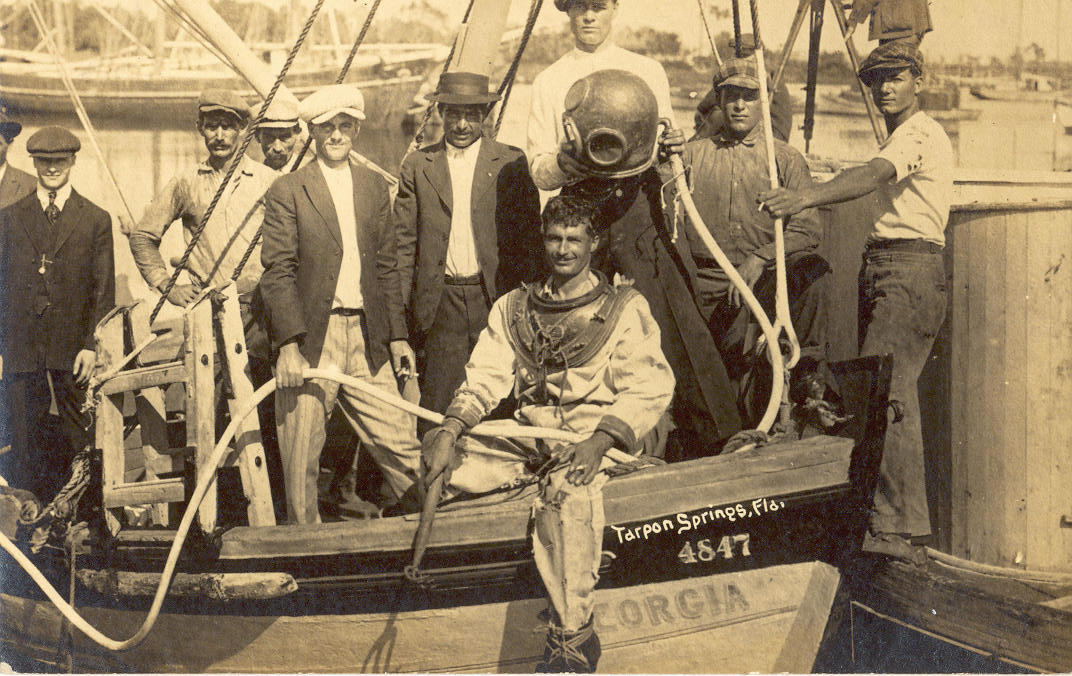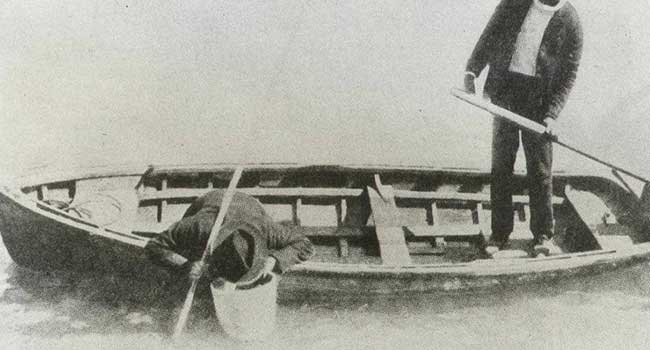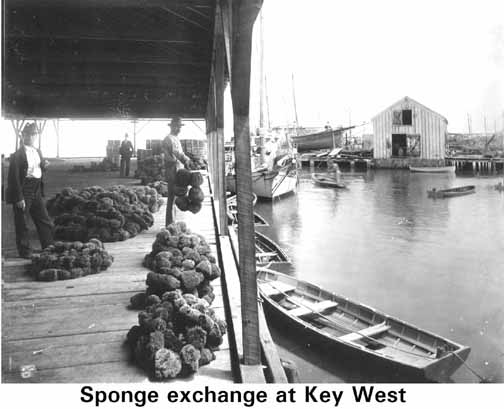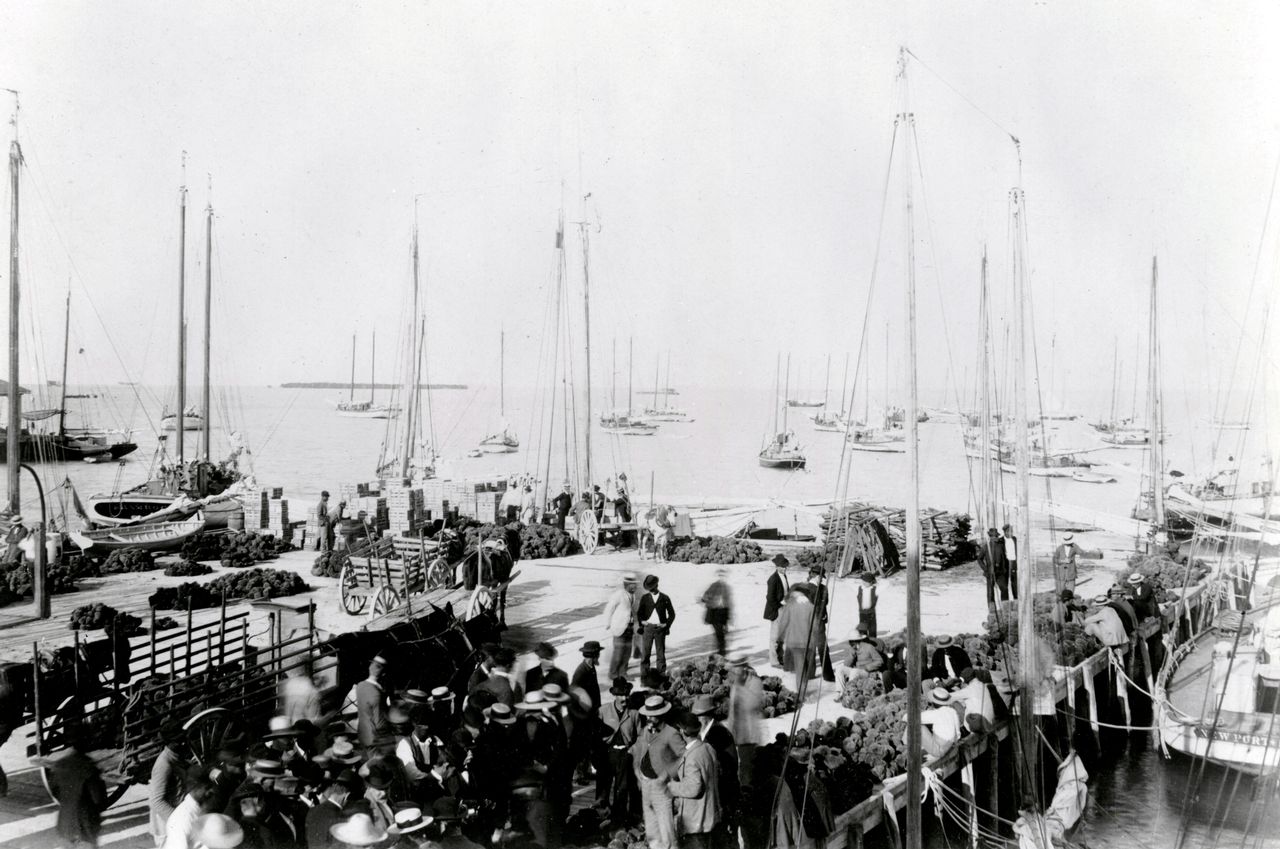2 Antique authentic Florida sponging history prints. Plate 19. "YELLOW SPONGE" From Matecumbe Key. & Plate 13. "SHEEPSWOOL SPONGE" From Matecumbe, Florida Keys. Published in "Bulletin of the United States Fish Commission", 1897-1898. George M. Bowers, Commissioner Measures approx. 10.5x7.25 inches. This is an original antique NOT a reproduction. Items are shrink wrapped on acid free backing and mailed flat. 30-day return policy for any reason.
FLORIDA SPONGING INDUSTRY

Postcard courtesy of the Matheson History Museum collection
"The Florida Commercial Sponges"
"The merchantable sponges of the waters of Florida fall under five heads - the sheepswool or "wool" sponge, the velvet sponge, the grass sponges (two species), the yellow sponge, and the glove sponge. Numerous varieties have been described by naturalist and many grades are recognized by dealers.



Sponge sale on the dock of the Key West Bight at the foot of Elizabeth Street, c.1890. Photo: Key West Art & Historical Society
The principal center of the industry is Key West, where more than seven-eights of the business is carried on. Other places at which sponges are landed are Apalachicola, St. Marks, and Tarpon Springs. About 100 registered vessels and 200 unregistered vessels and boats are employed in the fishery, which, with their outfit, are worth about $260,000, and are manned by upward of 1,400 fisherman.


Courtesy - CARRABELLE HISTORY MUSEUM
Sponges are by far the most important of the fishery products of Florida, representing about one-third of the annual value of the fishing industry. In the calendar year 1895 the Florida sponge industry yielded 306,070 pounds of sponges, of which the first value $368, 871. In 1896 the catch, as represented by the purchases of the wholesale buyers who handled practically the entire output, was 234,11212 pounds, having a value of $273,012. In 1897 the product was 331,546 pounds, valued at $281,640."
"Bulletin of the United States Fish Commission", 1897-1898. George M. Bowers, Commissioner
